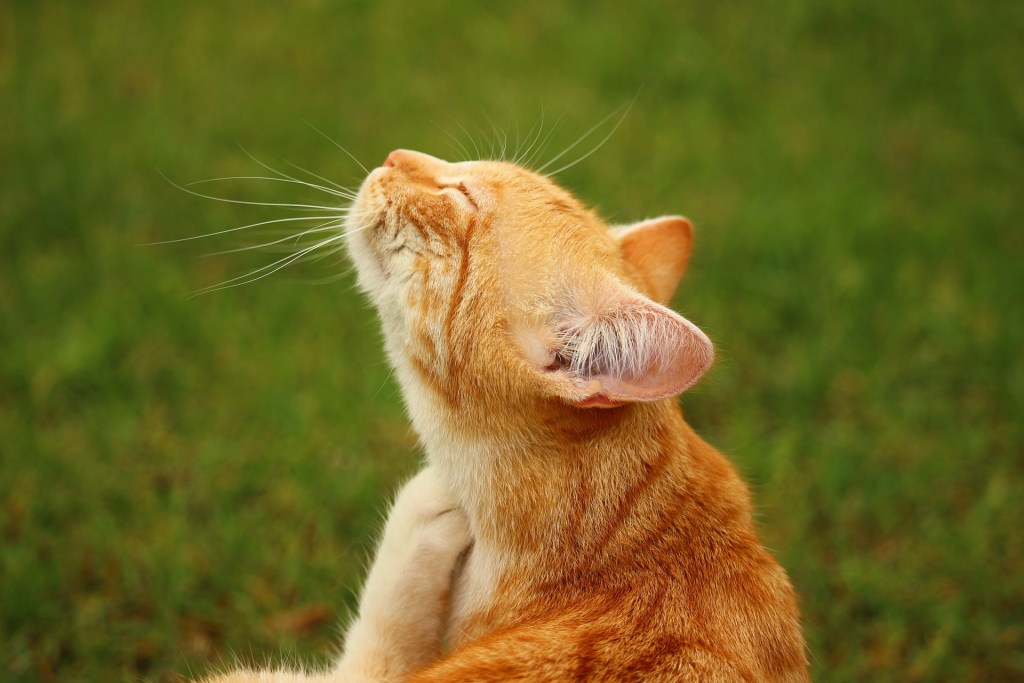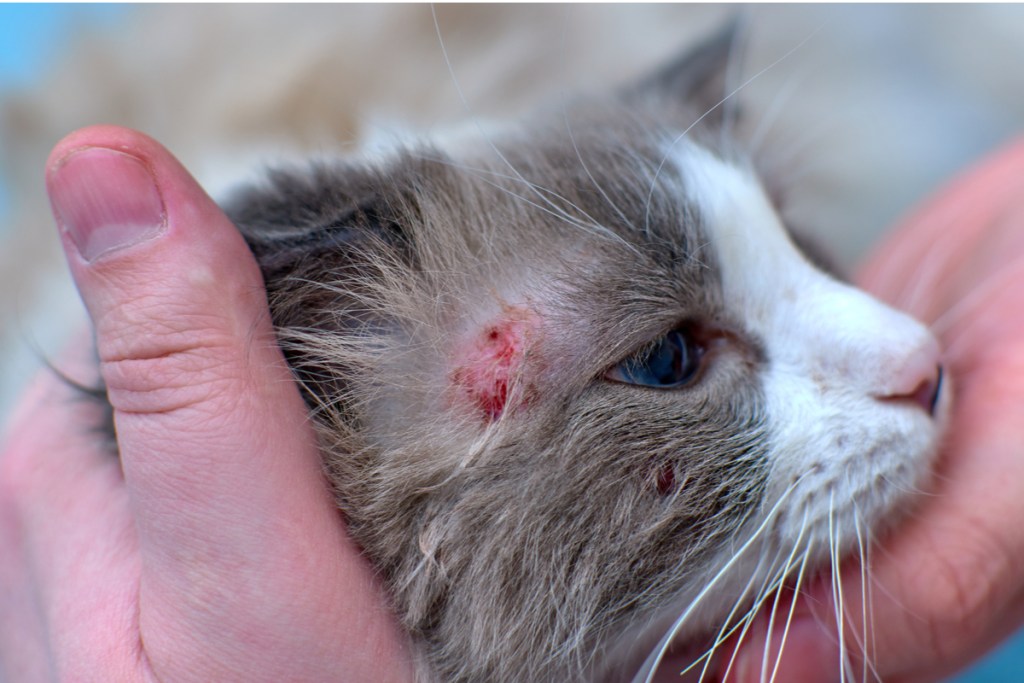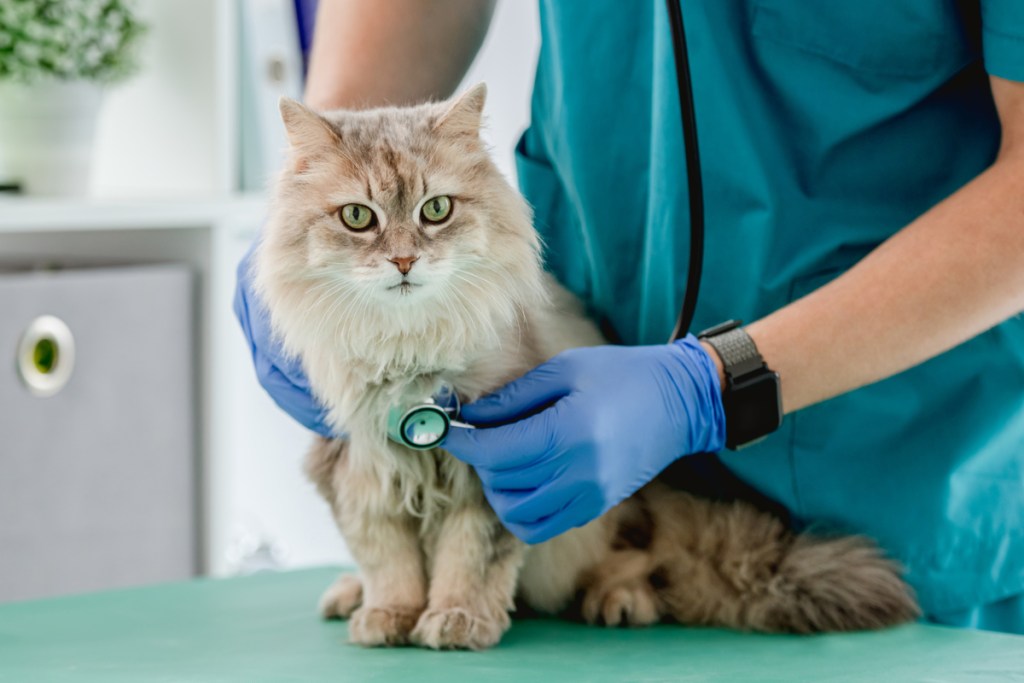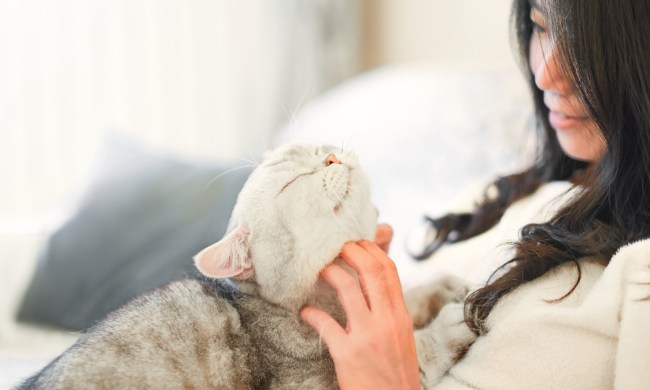If you ever notice irritated skin or hair loss on your cat, your first thought might be that your cat has fleas. While that could be the case, it’s also possible that a bout of ringworm is to blame. Ringworm can be irritating and uncomfortable to your cat and can even spread to people and other pets in your home. Because of this, it’s essential to identify and appropriately treat ringworm in your cat immediately. Prompt treatment can help minimize or prevent its spread, and it also means that your cat will feel comfortable and happy again quickly.

What is ringworm in cats?
Ringworm might sound like a worm or parasite causes it, but it’s actually a fungal infection that affects your cat’s skin and hair. Several types of fungi can cause ringworm infections, and these fungi can also infect humans, dogs, and other cats.
Ringworm can be highly contagious, and your cat could get infected several ways. Ringworm can spread if your cat comes into direct contact with another cat or person with the fungus. It’s also possible for your cat to get ringworm by sleeping on a contaminated bed or by coming into contact with surfaces like contaminated combs, food bowls, and furniture.
In many instances, your cat might come into contact with the fungus but not get ringworm. However, factors like a weakened immune system, irritated skin, or the presence of a scratch or wound can increase the chances of your cat becoming infected.

What does ringworm look like in a cat?
Ringworm can present multiple ways in your cat. Some cats have extra-mild symptoms, and you might only notice that your cat’s skin looks scaly. Other cats may develop the classic round, thickened skin patches or round patches of hair loss that look like a ring. Those patches can become itchy, and some cats might develop claws that look deformed or irritated. It’s also possible for cats to have ringworm but display no symptoms.

How to treat ringworm in cats
If you suspect your cat has ringworm, it’s essential to make a vet appointment so they can confirm the diagnosis and determine the type of fungus that’s causing the infection. Your vet might examine your cat using fluorescent light, and they might also take hair and skin scrapings for laboratory analysis.
Once your vet diagnoses ringworm, they’ll prescribe an appropriate treatment for your cat’s situation. Vets often recommend topical creams or shampoos and oral anti-fungal medications.
In addition to treating ringworm in your cat, it’s important to treat the environment where he’s been. You’ll need to thoroughly clean and disinfect surfaces like carpets, furniture, and bedding that your cat uses. You’ll also need to clean items your cat comes into contact with, like his food dishes and brushes.
Remember that your cat will still be contagious when you begin treating him, so you may need to take extra steps to protect yourself and anyone else in your home. You might find it best to restrict your cat to a few rooms of the house so he doesn’t come into direct contact with other pets. This can also minimize the amount of cleaning you have to do. When you need to handle your cat, it’s a good idea to wear gloves and always wash your hands and arms thoroughly right after you’re done. You may also want to have your other pets tested for ringworm so you can start treating them promptly if needed.

The bottom line on ringworm
Hopefully, your cat never deals with a ringworm infection. However, it’s a good idea to be able to recognize the signs of ringworm just in case. Because ringworm is so contagious, acting promptly can help minimize its spread and keep everyone else in your home safe. Don’t try to treat ringworm yourself. Instead, go right to your vet so you know you’re using products made for the specific fungus that’s causing the infection. Using the correct treatment from the start means your cat will feel better sooner.


